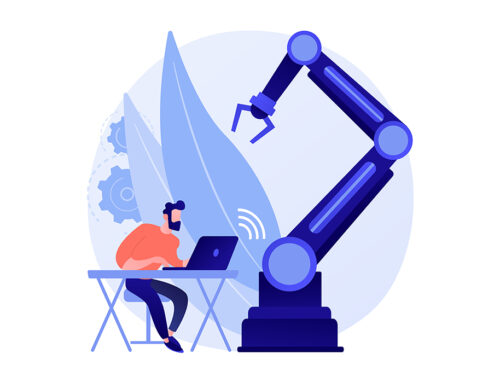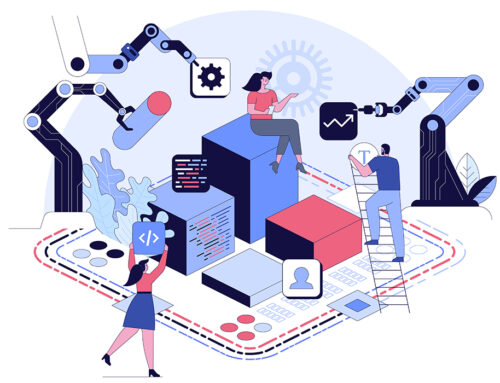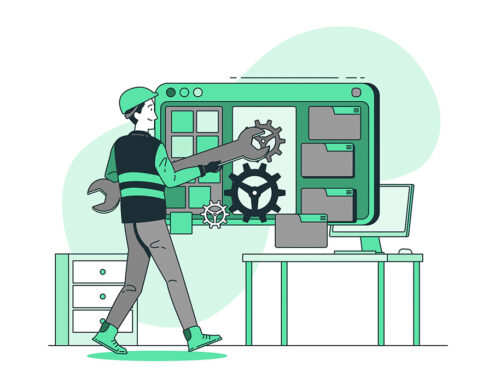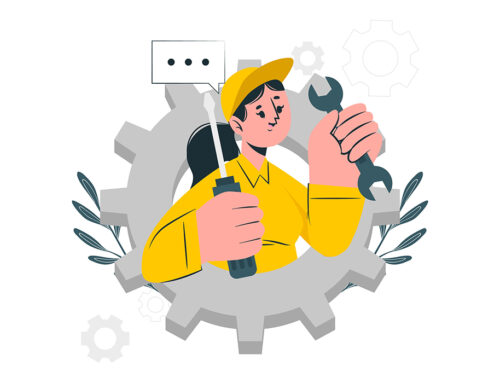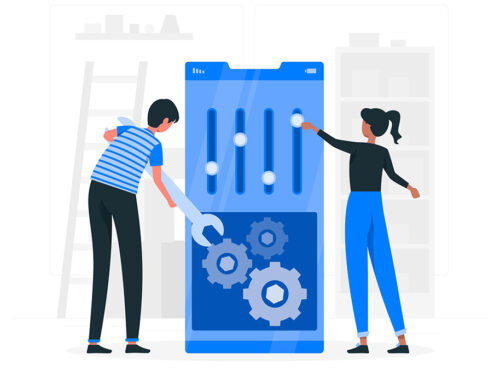Whether you are operating in the field, managing service operations, or driving digital transformation at a strategic level, field service in 2025 will look significantly different from just a few years ago.
Author Radiana Pit | Copperberg

Photo: Freepik
Evolving customer expectations, increasingly stringent regulatory requirements, and sweeping technological and generational shifts are redefining what it means to succeed in this sector.
So, how can organizations prepare effectively for what’s ahead?
In a recent episode of Copperberg Conversations, Managing Director Lisa Hellqvist and Gomocha’s CEO, Martin Knook, explored six pivotal trends already influencing field service. From the rise of outcome-based service models to the advancement of predictive maintenance and the growing focus on sustainability, their conversation sheds light on the most pressing challenges and promising opportunities that leaders must navigate in the years to come.
1. Sustainability: From Buzzword to Business Driver
Sustainability is a core business requirement. Where it was once handled as a broad corporate initiative with limited operational ownership, it’s now becoming a day-to-day responsibility for field service leaders. More customers are choosing service providers based on their environmental credentials, and that shift in mindset is influencing how organizations position themselves in the market.
Rather than searching for a single technological fix, Martin Knook encourages a more holistic approach. He highlights the value of building sustainability into operations through circular economy principles, and starting with a focus on “reusing, repurposing the asset first.” For many manufacturers, this is where the biggest gains can be made.
For Gomocha, this means helping companies improve spare parts management, streamline returns and repairs, and better track asset lifecycles, which supports ESG goals. That said, Martin acknowledges that implementing sustainable solutions is not always straightforward. Pricing models are still evolving, and many companies are experimenting to figure out what customers are really willing to pay for when it comes to greener service offerings.
2. Data Integration: Breaking Silos to Build Strategy
While data is often described as the most valuable resource today, many organizations continue to struggle with fragmented systems and outdated infrastructures that hinder their ability to extract meaningful insights. Siloed legacy platforms, unclear data ownership, and inconsistent processes remain common obstacles, resulting in inefficiencies that ripple across operations.
The challenge is particularly straining for organizations still operating within rigid departmental structures. The lack of cross-functional visibility often limits their ability to respond quickly, innovate effectively, or fully leverage the capabilities of modern technology.
To address this, they must reframe how data is governed and used. Rather than assigning ownership based on job titles or business units, a more effective approach is to link data ownership to its actual usage. Those who rely on specific datasets to carry out daily tasks are often best positioned to ensure their accuracy and relevance.
Master Data Management (MDM) facilitates this change. It provides a unified understanding of core data, such as customer names, asset records, and service entitlements, reducing the risk of inconsistencies that can disrupt everything from field execution to billing and compliance. Aligning systems around a unique source of truth is thus critical for operational efficiency, and also for scaling digital initiatives.
3. Predictive Maintenance: A Marker of Maturity
Predictive maintenance has long been positioned as a key enabler of operational efficiency in field service, but despite the enthusiasm, many companies are still in the early stages of implementation. For most, ambition is high, but readiness, not so much.
Rather than viewing predictive maintenance as a single project or tool, Martin Knook frames it as a marker of organizational maturity. Developing this capability requires more than just a few connected assets. It also requires the right technical skill sets and a structured approach to data collection and analysis.
Gomocha also encourages “field service journalism” for this purpose. Technicians are empowered to consistently capture valuable data in the field, insights that, over time, can shape the foundation of predictive models. Organizations that maintain long-term service contracts or have a history of asset data are particularly well-positioned to benefit, as this historical context can reveal patterns essential to predicting failures and optimizing performance.
It is also important to note that concerns around data privacy and compliance should not stand in the way of progress. Regulatory frameworks such as GDPR, when understood properly, can actually enhance data practices by setting clear expectations. As Martin explains:
“GDPR is not limiting. It’s setting a scene on how to treat the data, how to protect it, how to store it, and how long to keep it. It is behavioral instructions for us to get organized around. And for a good reason, because you don’t want your data to be widely known to your competitors or widely known to anybody in the world.”
In other words, compliance should be seen not as a constraint, but as a catalyst for building responsible and scalable data strategies.
4. Outcome-Based Services: The Ownership Shift
In recent years, servitization has changed the way people think of product ownership. There is now a growing collective movement away from product ownership towards access, and many customers prefer to rent rather than own equipment. This mindset reflects broader changes in consumer expectations, as renting a service means the provider is responsible for maintenance and support, including technical assistance.
This is why data is at the core of service models. It is much needed for maintenance to be timely and efficient. Outcomes cannot be promised without the ability to predict behaviors, which requires a deep understanding of the data at hand. While many assets are now capable of transmitting data, analyzing and leveraging that information effectively requires different capabilities.
The potential for the Internet of Things (IoT) and assistive technologies (AT) is significant, but it is important to recognize that the value doesn’t come immediately after deployment. The real challenge is identifying the patterns within the data to deliver meaningful insights and outcomes.
5. Talent: Rethinking Roles and Making Work Meaningful
The “silver tsunami” of retirements and the expanding skills gap are part of the challenge. And while it is important to address this issue and the lack of skills in the younger workforce, the nature of the work itself needs rethinking.
Martin argues that the root of the problem is not the lack of talent, but how the field service industry is perceived. Specifically, it has previously failed to position field service roles as rewarding and innovative. As he put it, “There’s a lack of recognition for the valuable work that field service technicians do.”
To address this, some organizations are reevaluating how work is structured, separating high-skill tasks from more routine ones. By concentrating specialized, high-skill tasks within the workflow and organizing the work around them, they can provide a more focused and rewarding experience for technicians.
6. Imagination: Don’t Just Optimize, Reimagine
Field service operations are inherently complex, but Martin encourages leaders to avoid getting too caught up in the details. He highlights that while the field service industry is often focused on minute details, there is a tendency to overlook the importance of rethinking the overall structure.
Instead of just analyzing existing processes, organizations should dedicate more time to reimagining how things could be organized in a fundamentally new way. By focusing on creative, strategic thinking, they can develop a clearer vision and set of objectives that will better guide their activities.
Likewise, if field service technicians’ roles are better aligned with the broader goals of the business, it could lead to a more integrated and effective business model.
Think Outside the Box
Sustainability, data integrity, predictive technology, and a shifting workforce are transforming the field service sector, and each organization faces unique challenges. The roadmap will vary for each, but the direction is clear for all.
As Martin concludes, “Just allow that out-of-the-box imagination.”
Tune in to this episode of Copperberg Conversations on Manufacturing Matters for even deeper insights into how companies can prepare for the challenges and opportunities in field service today and tomorrow.
About Copperberg AB
Founded in 2009, Copperberg AB is a European leader in industrial thought leadership, creating platforms where manufacturers and service leaders share best practices, insights, and strategies for transformation. With a strong focus on servitization, customer value, sustainability, and business innovation across mainly aftermarket, field service, spare parts, pricing, and B2B e-commerce, Copperberg delivers research, executive events, and digital content that inspire action and measurable business impact.
Copperberg engages a community reach of 50,000+ executives across the European service, aftermarket, and manufacturing ecosystem — making it the most influential industrial leadership network in the region.



